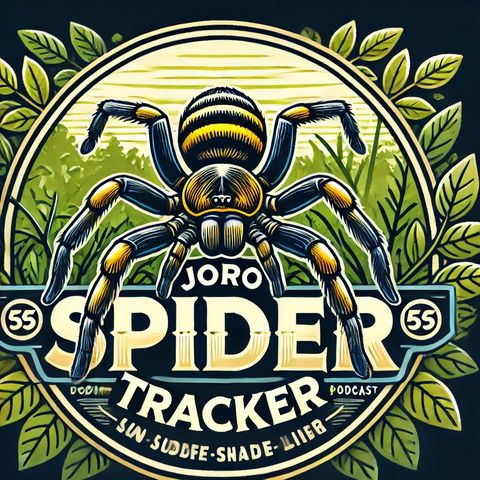Captivating Joro Spider Spreads Across the Southeast, Sparking Ecological Interest

Download and listen anywhere
Download your favorite episodes and enjoy them, wherever you are! Sign up or log in now to access offline listening.
Captivating Joro Spider Spreads Across the Southeast, Sparking Ecological Interest
This is an automatically generated transcript. Please note that complete accuracy is not guaranteed.
Description
The Joro spider, scientifically known as Trichonephila clavata, is a strikingly colorful member of the orb-weaver spider family. Originating from East Asia, particularly Japan, China, Korea, and Taiwan, this spider...
show moreThe Joro spider is notable for its size and vibrant appearance. Females, which are significantly larger than males, can measure up to three inches across when including leg span. Their bodies are bright yellow and blue-black with distinctive red markings near the abdomen, making them easily identifiable. Males are smaller and less colorful, which is typical of sexual dimorphism in spiders.
This species builds large, strong webs that can be over three feet across. The webs are usually constructed in open areas where the capture of flying insects is optimal. The silk of Joro spiders has been studied for its impressive durability and elasticity, which is said to be stronger than the silk of other related spider species.
Ecologically, the Joro spider is an efficient hunter of pests, helping control populations of insects including mosquitoes and flies. Despite their intimidating size and appearance, Joro spiders are not a threat to humans. Like most spiders, they possess venom to subdue their prey, but it is largely harmless to humans, with bites occurring only in rare defensive situations and causing minimal effects.
Their presence in the United States has led to some ecological concerns among scientists. There are questions about the impact of the Joro spider on local ecosystems and whether they might outcompete native spider species. However, as of current understanding, they are not considered invasive in a harmful sense, as they do not seem to be significantly disrupting local ecosystems.
The spread of the Joro spider in new environments is believed to be facilitated by their unique ability to "balloon" using their silk. Young spiders can catch the wind with their silk strands to disperse over great distances, aiding their spread across regions.
While the Joro spider invokes a mix of fascination and fear, it plays a role in natural pest control and adds to the biodiversity of its adopted environments, sparking interest and further research into how non-native species adapt and integrate into new ecosystems.
Information
| Author | QP-4 |
| Organization | William Corbin |
| Website | - |
| Tags |
Copyright 2024 - Spreaker Inc. an iHeartMedia Company
